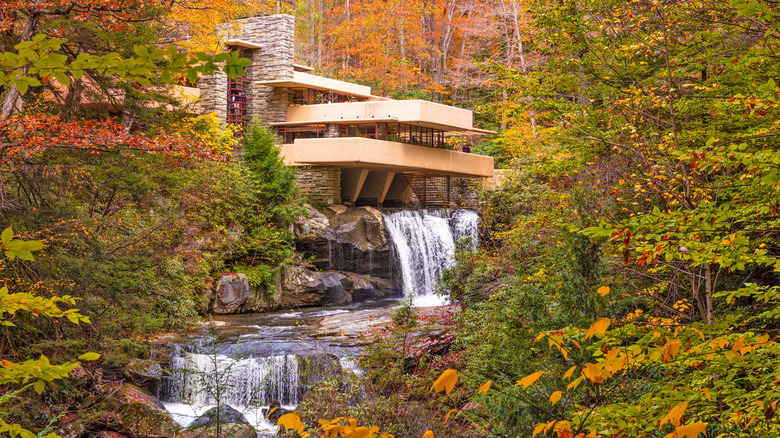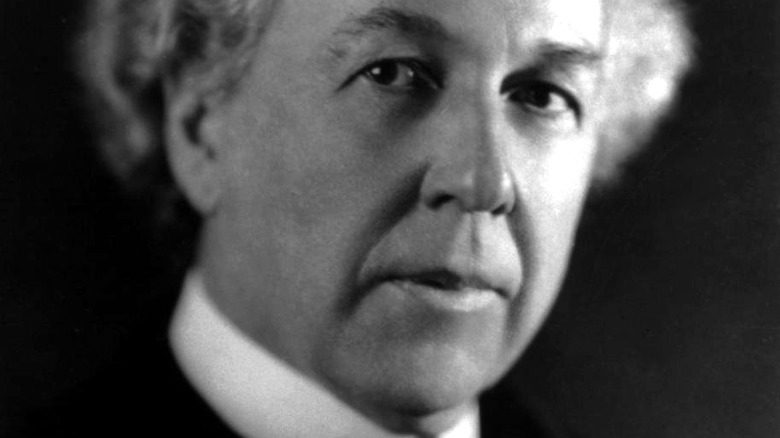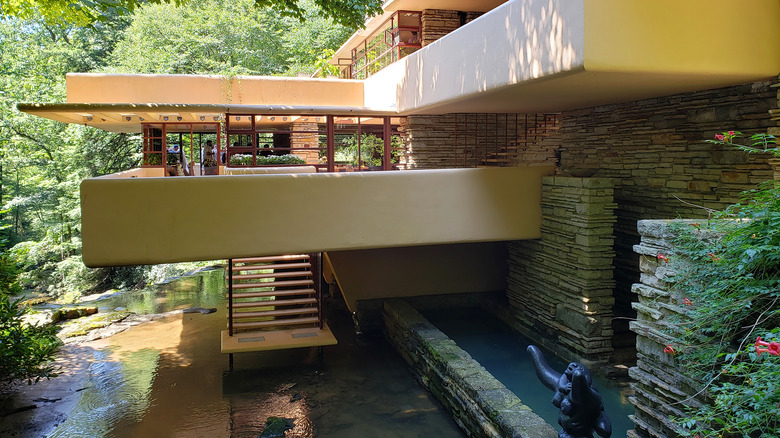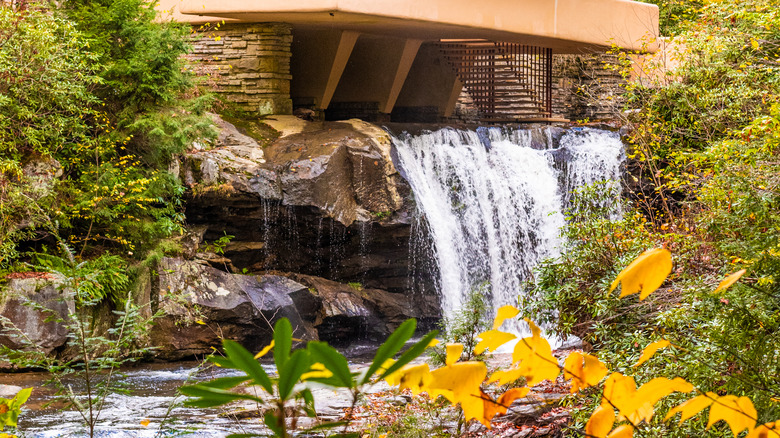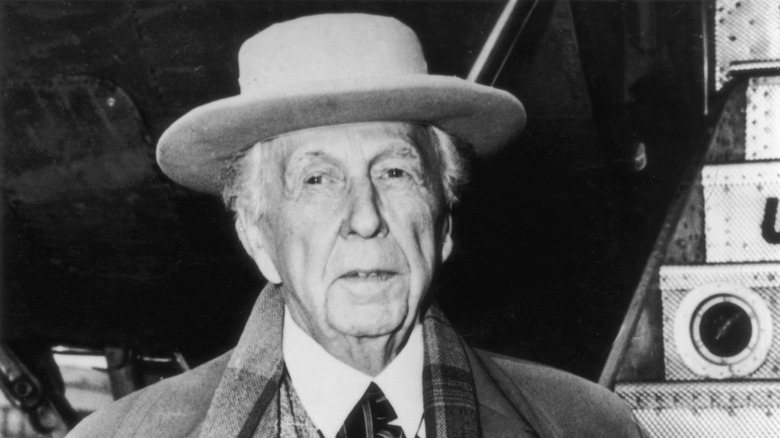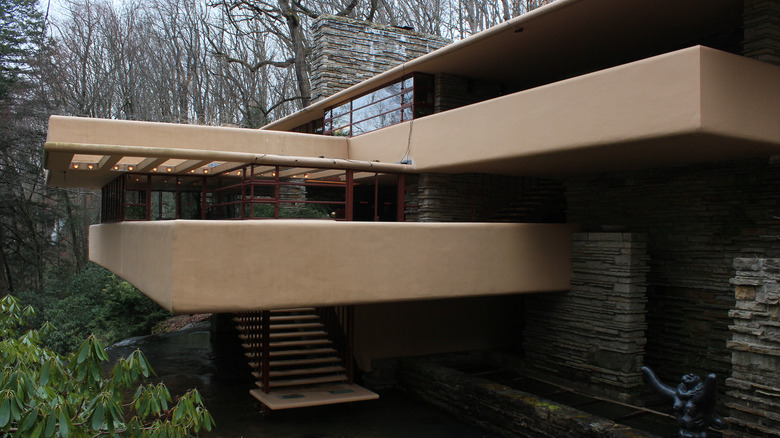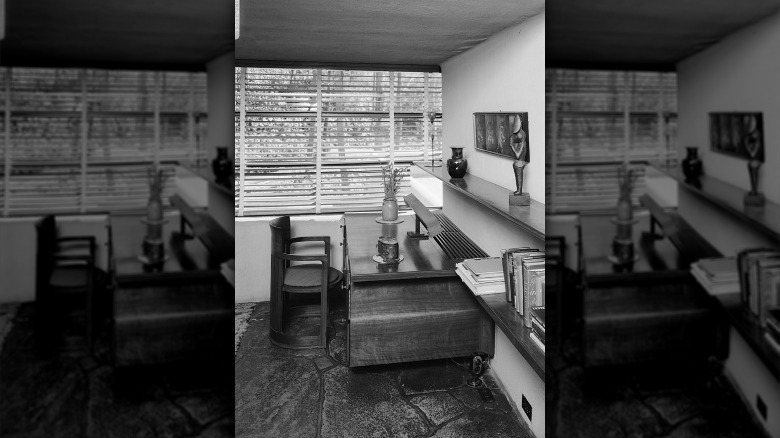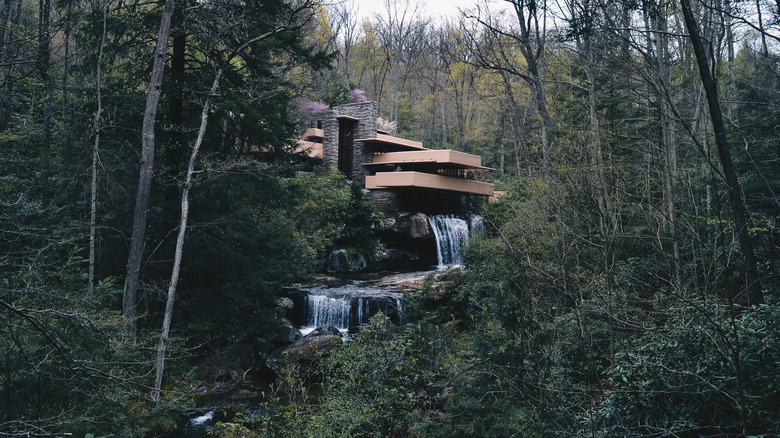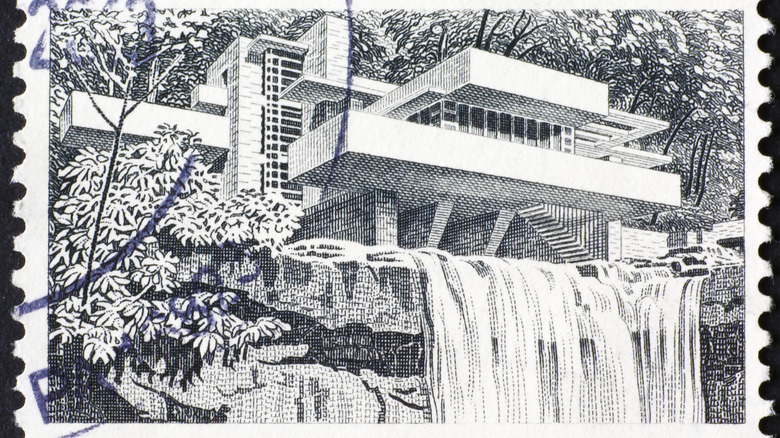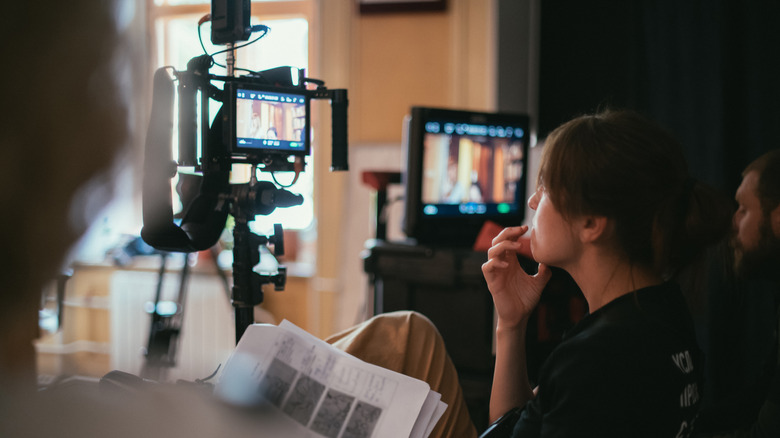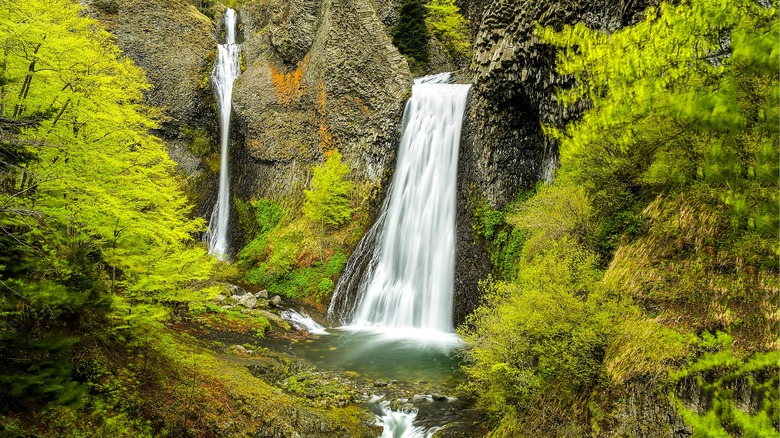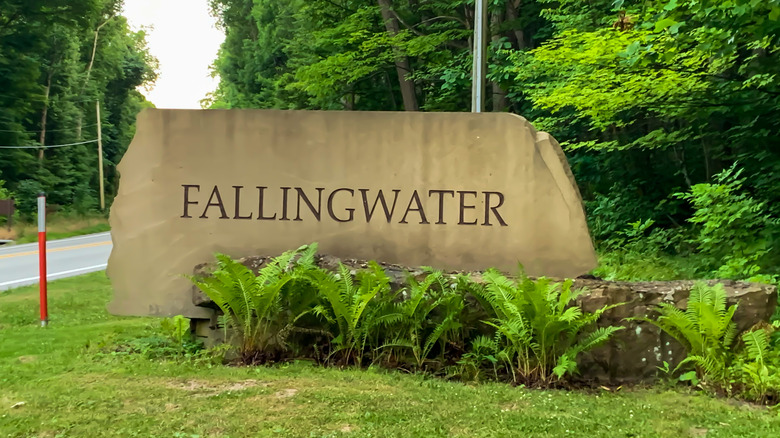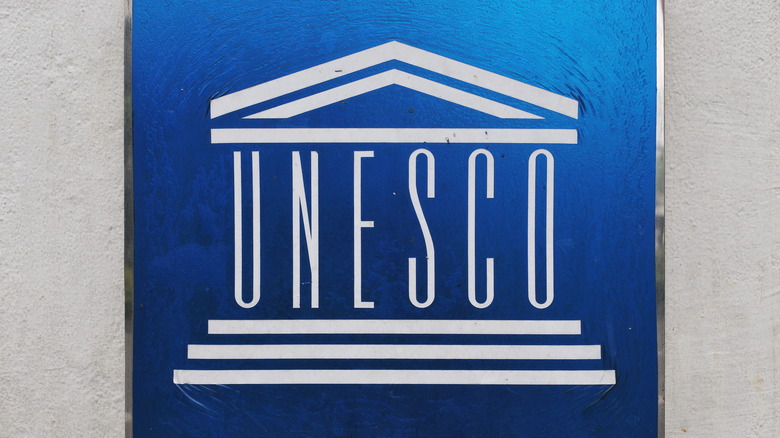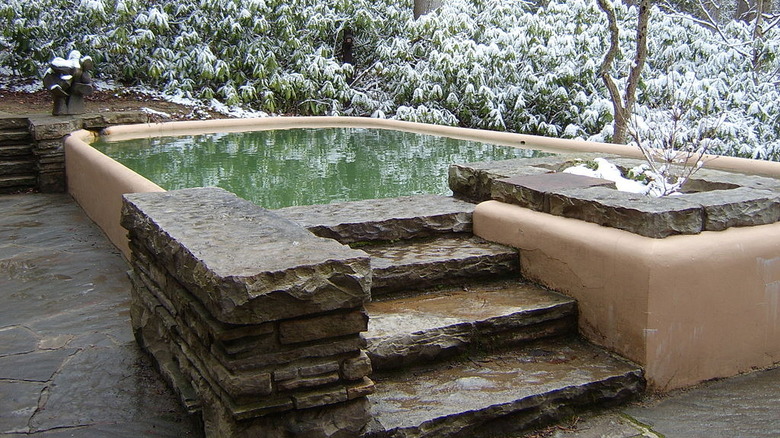Facts About Fallingwater That The Public Doesn't Know
Located close to Mill Run, in southwestern Pennsylvania, and sitting halfway atop a waterfall, is Fallingwater, a unique and magical home built by the late architect Frank Lloyd Wright. At the time of the design and construction of this beautiful home, Frank Lloyd Wright was 67 years old. The house was built to supply Edgar J. Kaufmann and his wife, Liliane, with a place where they could have a weekend getaway to relax and unwind.
Fallingwater was designed to bring humans, architecture, and nature together so that each of these three things would benefit from one another. Starting in 1964, Fallingwater was converted into a museum and opened to the public. As of this time, over five million visitors have been able to enjoy Wright's masterpiece in person. Despite its popularity, there are still many facts that the public doesn't know about Fallingwater. This includes its history and the man behind the masterpiece: Frank Lloyd Wright. Take a peek behind the curtain below.
It was Frank Lloyd Wright's comeback
Although Frank Lloyd Wright was a respected architect for his time, as he got older, and due to the Great Depression lessening the desire for newer developments, many critics judged his career as over. However, when the Kaufmann family brought Wright on to design and build their weekend retreat, Wright showed the world and his critics that his career wasn't over after all.
The family loved the house. The couple's son, Edgar Kauffmann Jr., shared in 1963, "Fallingwater was created by Frank Lloyd Wright as a declaration that in nature man finds his spiritual as well as his physical energies, that a harmonious response to nature yields the poetry and joy that nourish human living." Once referred to as being washed up, Wright made quite the comeback thanks to his amazing work with Fallingwater and went on to create several other renowned projects in his final years.
According to Frank Lloyd Wright's website, he was an architect for over 70 years, and helped to change how we live and interact with buildings. He was so renowned that 12 of his designs were included in Architectural Record's hundred most important buildings of the 20th-century. His legacy will continue to live on, influencing the future of architectural design and helping to shape what is to come, as many will look to him and his creativity for guidance and inspiration.
It has a nature-inspired design
Despite it being the interior of the home, the inside was designed to match the look and feel of forestry. According to Nautilus, Sandstone was placed throughout the home, making up the 5,300-square foot house's walls and flooring. The living room includes an extension of rock which makes the fireplace look and feel even more outdoorsy. In addition to these nature-inspired designs, the bedrooms in the home all have their own porches, the windows throughout the home open externally and are made so that they do not disturb the view, and a glass hatchway is incorporated into the main level's flooring which, when open, exposes a staircase that leads to the stream located below.
With such a design in place, visitors are left feeling at one with nature. The house is supposed to embody a single moment, frozen in time, thanks to its immaculate design and connection to nature. It's both stationary and moving (the waterfall and stream are in constant motion, but the walls are forever in place,) and finite and boundless (the house doesn't grow, but the water is always being replaced).
There are some structural problems in Fallingwater
Although Wright was a respected architect and Fallingwater was one of his most prized designs, there are still some prominent flaws in this architectural beauty. Since the building sits above a waterfall, mold growth, which feeds on moisture, has become an issue, as per its website. Another problem with the structure of Fallingwater is that the main floor's garden requires extra support. Wright, however, ignored this notion — as well as other advice — which resulted in the main floor's beams slumping over time.
The problems don't just stop there, however. There are several cracked or damaged pieces throughout Fallingwater that could use some TLC. The Guardian notes how much Fallingwater's repairs are expected to cost — a whopping $11.5 million. The repairs will involve installing cables underneath cracking concrete beams and removing and replacing the unpleasant scaffolding framework that has kept the building from falling apart since 1997.
The sketch allegedly took two hours
When you look at Fallingwater, which is said to be one of the most popular homes in the U.S., it's hard to imagine that the initial design sketch took just two hours to complete. But it's true. Though he had been commissioned to begin work on the home's construction a year prior, Wright decided to spend his year doing next to nothing except conducting an area survey of where he wanted the house to be. According to Roos International, it wasn't until Kaufmann came to Mill Run, Pennsylvania, for a surprise visit to view the plans that Wright decided it was time to get to work.
Kaufmann drove 140 miles to view the plans out of excitement. Even with such a short deadline to get the work done, Wright, who remained calm throughout the whole ordeal, was able to have the completed sketch ready for Kaufmann to see upon his arrival only two hours later.
The exterior plans were changed
Wright had originally intended for the exterior of Fallingwater to be more flamboyant than what it turned out to be in the end. According to Designing Buildings, he had wanted to layer parts of the home, mainly the concrete beams, in gold leaf, but Kaufmann and his wife rejected that idea. Wright also suggested a white mica finish which the Kaufmanns decided against as well.
Kaufmann and his wife thought that using gold leaf or white mica would be too extravagant for what they wanted in their country home villa. They wanted something simpler and less distracting. Because of that, only two colors were used throughout the building: a light ochre and Cherokee red, which was a signature color for many of Wright's designs. They were earthy and blended well with the surrounding nature. Sometimes simpler is better!
The furniture and art have remained intact
Much of the furniture displayed throughout Fallingwater was, unsurprisingly, designed and built into the home by Wright himself, as per DailyArt Magazine. He also wanted Fallingwater's furniture to be able to last a good while and referred to the process of building it into the house as client-proofing it. That way, his vision would stay intact long after leaving the house.
The paint and many other items throughout Fallingwater were designed by PPG, a company that focuses on paints and specialty materials. They created it to protect the walls and ceiling closest to the waterfall, protecting them from its natural elements. To this day, the furniture remains original and intact despite the years that have passed since its original assembly. The fact that the furniture has remained the same all this time only adds to the value and individuality of the home-turned-museum.
Price: Then vs. now
It should come as no real surprise that the price for an architectural design similar to that of Fallingwater would be in the millions today, especially with inflation and the value of the American dollar increasing from then to now. However, the original price to construct this building was much less than that. Although Wright had budgeted the house at around $35,000 in the beginning, the final cost ended up being $155,000, which was $120,000 more than initially anticipated, as per Just Fun Facts. While the main house cost $75,000, the invoice cost rose thanks to the $22,000 bill for the built-in furniture, and $50,000 for the guest house. There was also an $8,000 architect fee.
Bindley Hardware Co. mentions that the value of Fallingwater today would be estimated at around $10 million, which is more than double the value of it when it was first built. However, when it was sold in 2004, it was estimated to be worth $15 million at that time.
It's a national historic landmark
According to the National Park Service, a National Historic Landmark (NHL) is a historic property that shares something about our country's past and culture. This title is given to landmarks that captivate and enthrall those who appreciate such historic properties. In 1966, Fallingwater received the NHL title and is now one among 2,600 other landmarks. And Fallingwater wasn't the only historic landmark that Frank Lloyd Wright created — he has 26 others on the register.
Possibly one of the world's most famous buildings from one of America's greatest architects, Fallingwater has a rich history behind it as well as a stunning and courageous architectural design that was created to help humans connect with both nature and architecture. These reasons and more have made Fallingwater worthy of holding the National Historic Landmark title. With 26 landmarks under his name, it just proves what an architectural prodigy Wright truly was and why his name inspires so many present-day architects.
Inside photography is banned
While photography of Fallingwater's exterior is permitted for personal use, photography of the interior is not allowed for most tours. Similarly, neither painting nor sketching is permitted, as per its official website. There are a few reasons why photography is not allowed, one of which is if those visitors were allowed to take pictures, the interior might get overflooded with people wanting to snap a photo.
However, there are some exceptions to the no-photography-allowed rule. According to Fallingwater's website, pictures of Fallingwater for journalistic use are available on request. Commercial filming and photography warrant a scheduled visit, and you must submit fee payment and insurance in advance.
Additionally, professional photographers are allowed to take photos after signing a permission form that states that the photographs or video footage taken at Fallingwater cannot be used for endorsing commercial products or services and are only for personal use; they cannot be used as stock photos or for portfolio work.
The waterfall was never supposed to be part of the design
According to Discover the Burgh, Kaufmann and his wife originally wanted their country home to be placed on the banks of the river across from the waterfall, to enjoy the view. However, Wright ignored their request and decided to build the famous home on top of the waterfall instead.
While the view of the waterfall is hidden inside the house, the Kaufmanns could still enjoy its presence. The power of nature became interwoven within the house due to its organic design, and while you cannot see the waterfall, you can definitely still experience it. For example, you can hear the waterfall from inside the home if you listen closely, or you can even head down to the glass hatchway that leads down to the waterfall's stream.
No matter what, the experience of the waterfall-built home is truly magical. While Kaufmann and his wife were probably surprised when they found that their home was to be built on top of the waterfall instead of across from it, they undoubtedly enjoyed the finished project.
'The Fountainhead' drew inspiration from Wright
"The Fountainhead" is a novel written by Russian-American author Ayn Rand in 1943 and was loosely inspired by Wright and Fallingwater. The protagonist of the story, a man named Howard Roark, bears an uncanny resemblance to Frank Lloyd Wright, and some of the homes that Roark designs in "The Fountainhead" bear a resemblance to Fallingwater.
The book follows Howard Roark, who is thrown out of his architectural school for his unique designs. Although Wright was not expelled from such a school, he definitely had unconventional and unique ideas and designs, as made evident by Fallingwater. The book goes on to detail Roark's life as he struggles to find work, according to Ayn Rand. Since he won't compromise on his vision, he struggles with critics, colleagues, and society as a whole. It draws on many different aspects of Wright's own life and the projects he did. And though it had initially been rejected by 12 publishers, "The Fountainhead" went on to become a bestseller.
There are a surprising amount of tours
Of course, it's no surprise that such a historic landmark offers tours, but many may be unaware of just how many types of tours are offered at Fallingwater. According to Fallingwater's website, the Guided Architectural Tour allows access to the interior of the home and the grounds, while the In-Depth Guided Tour allows for a tour through the extended house interior and also allows personal photography, with conditions.
There's also the Family Field Trip tour, the Brunch Tour, the Sunset Tour, and for an even more unique and fulfilling experience, the Forest to Table Dinner, where you are treated to a seasonal culinary experience. There is also a Focus Tour, with exclusive access to the house's interior and exterior and a seasonal meal served on the Pottery Terrace. With so many choices, there's truly something for everyone. However, those wanting to visit Fallingwater should be aware that tickets sometimes sell out weeks in advance, so it's advisable to make proper plans and schedule ahead.
It's a world heritage site
With only 1,121 World Heritage sites worldwide, it may come as a shock that Fallingwater made it onto such a short list. Despite the countless awards and recognitions it has received over the years, it wasn't until 2019 that Fallingwater was recognized as a UNESCO World Heritage site, one of only 24 sites in the U.S. This is the second site in Pennsylvania to make it onto the UNESCO World Heritage list, alongside Independence Hall.
World Heritage Sites are given such a title because of the value they offer to people. With being added to the list, it is assured that it will be protected and secure for future generations to appreciate and enjoy. Much like the National Historic Landmark title it had been given, Fallingwater also deserves the World Heritage site label as it is truly a marvel and a sight worth seeing. And 6.3 million visitors — the number of visitors it has received since 1964 — would definitely agree (via Fallingwater).
It also has a guesthouse
Fallingwater has its own guesthouse, too, per its official website. Though the main house had finished being built in 1938, it wasn't until the following year that the guesthouse was completed. The Kaufmanns wanted to ensure that the guesthouse would be equivalent in terms of architectural design to that of the main house, making it just as stunning as the primary living quarters.
There is also a cozy pool situated outside of the guesthouse. According to Wright House, the plunge pool is manufactured from the same materials as the main house and guest house, with the same stone used for the interior and exterior and the pool walls made to resemble the terraces. The fact that the pool ties in so well with the guesthouse and the main house makes it even more special and relaxing, and really allows guests to connect with the world around them and appreciate its splendor.
